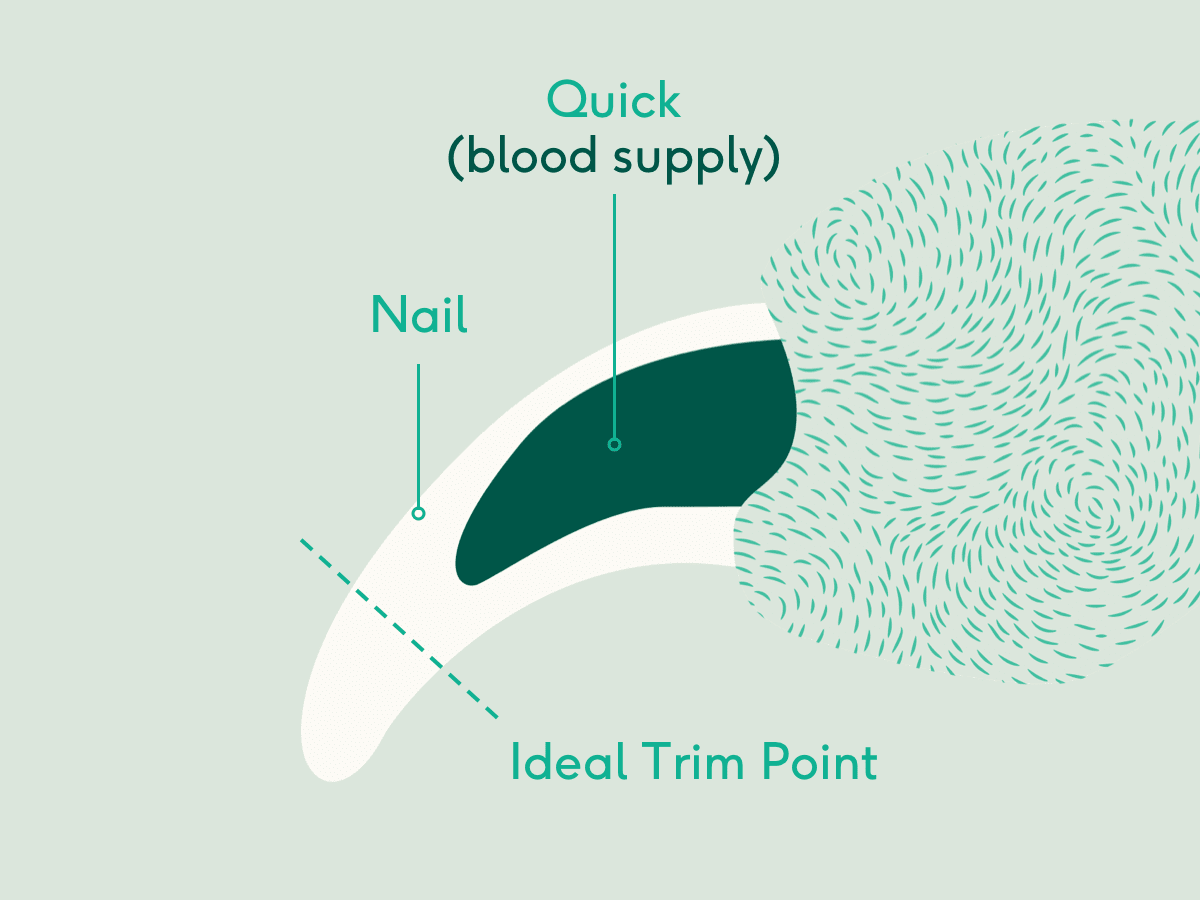If you can hear the ‘clickety-clack’ of your dog’s footsteps coming down the hall before you can see them, it might be time for a nail trim. Nail trimming is an essential part of grooming and health. The process can be stressful for your dog, so learning how to do it correctly can help keep them happy.
So why is nail trimming important?
More active dogs may not need their nails trimmed as they get worn down naturally by frequent walking and running. For most dogs, however, nail trimming is necessary for paw health and general mobility:
Long toenails themselves can cause painful toes and feet, as toenails that make contact with the ground get pushed back into the nail bed.
Trimming your dog’s nails can prevent problems like ingrown toenails, which can also cause discomfort and lead to infection.
Dogs use their feet to help figure out what kind of surface they’re walking on. Long toenails can interfere with this sensory feedback and cause them to adopt incorrect postures, leading to overused muscles and painful joints.
Trimming your dog’s nails yourself is an excellent opportunity to check their health – you may notice an injury or problem with their paws that you can then discuss with your vet.
Clipper vs grinder: Which tool should I use?
When choosing the best tool for trimming your dog’s nails, several varieties are available, each with its own benefits.
Clippers are the classic option and come in two main types:
Guillotine clippers – may be suitable for small or medium dogs, but possibly not strong enough for some larger dogs or those with thick nails. They also need their blade frequently changed to keep them sharp.
Scissor clippers – better suited to larger dogs, as they apply more force to the nail.
The main advantage of clippers is that they don’t make much of a sound, which may help if your dog is scared by the buzzing noise of a grinder. They also don’t require electricity or batteries.
Grinders, or ‘Dremels’, are electrical tools that grind down the nail. With grinders, it’s easier to avoid the quick, plus you can nicely round off your dog’s nails to make them less sharp, so they’re less likely to catch on carpets or leave scratch marks on you or your furniture. Grinders also make less work of trimming large, thick nails. The downside is that some dogs might get scared of the sound.

Let’s trim those nails!
Preparation
Choose the tool that best suits your dog and have a flashlight handy if they have dark nails. Get your dog comfy and give them a few extra cuddles if they seem nervous.
Determine where to trim
Dog’s nails are supplied with blood. The perfect place to cut is just before the blood supply (within 2 millimetres of the quick). Accidentally trimming in the wrong spot can be pretty painful for your dog, cause bleeding and make them more anxious about trimming next time. It’s easier to find the right place to cut if your dog has light-coloured nails. If your dog has dark nails, use your flashlight to see the blood supply area better. Finally, give front paws a little closer attention as they are more likely to have overgrown nails.
Time to trim
Remember to always cut parallel to the bottom of the nail. Trim a little bit at a time and use rewards to keep your dog comfortable if needed.
Reward
Don’t forget to reward your dog afterwards so that they have a positive association with nail trimming, making them less anxious next time.

Is your dog still not loving trim time?
If getting their nails trimmed is still not on their list of number one activities, there are a few strategies you can try:
Keep your pup as comfortable as possible.
It’s ideal to start as young as possible, so your dog gets used to trimming while they’re still a puppy.
Nail trimming might be a two-person job – one cutting and one gently restraining your dog – as it can be dangerous to cut a dog’s nails if they don’t stay still or are very anxious.
Try starting at the hind feet, where the nails are shorter and may be less sensitive.
You can try giving your dog a treat to distract them – give them a spoonful from their next Lyka meal in advance.
If your dog is especially anxious or has dark nails, ask their groomer or vet to assist.
If you’re really struggling with clipping your pup’s nails, Lyka’s co-founder and Integrative Vet Dr Matthew Muir strongly supports the ground-breaking work of Dr Sophia Yin in de-sensitising dogs to nail trims. Check out Dr Yin’s video Training a Dog to Enjoy Toenail Trims.
Lyka: the ultimate reward
What better way to congratulate your pup on a job well done than giving them a delicious and nutritious Lyka meal – try a Starter Box today!
)
)

)
)
)
)
)
)
)
)
